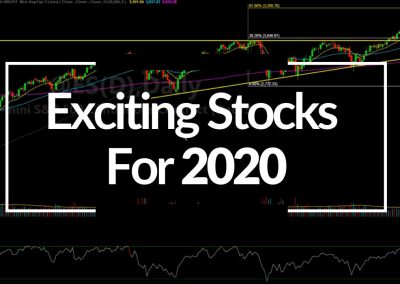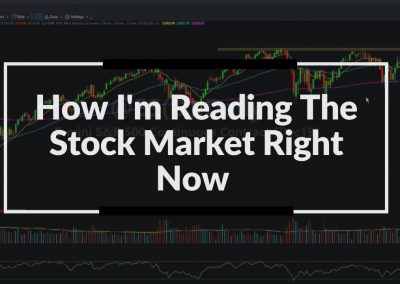Even if you are currently not a millionaire, if you are a financially savvy individual, then you may be looking to learn how to build a portfolio. With a solid financial portfolio, you will be able to watch your small sacrifices in the present become major gains in the future.
Though the financial industry can often be quite complex, effectively entering the market is still well within reach.
There are currently multiple different ways to begin effectively allocating your wealth. Hiring a financial advisor can help you learn how to build a portfolio, but many financial advisors can be rather expensive.
You can also strive to effectively teach yourself the principles of investing on your own and identify which options are available. Then you can begin to earn a substantial return on your investments.
This article will briefly review how to build a portfolio and make effective financial decisions. It will explore the principles all investors should know and also discuss the process of wealth allocation. If you are able to continually educate yourself about investing topics, then you will be much more likely to succeed.
The Most Important Principles of Investing
There are many different principles of investing that all investors should pay attention to. One of the most important things to keep in mind when constructing a portfolio is the principle of diversification.
By constructing a portfolio that consists of many different assets, the failure of one particular asset can be effectively contained. Diversification is just one of many strategies that are used to minimize risk.
Diversification can take place on multiple different levels. The broadest diversification strategy is one that involves investing in multiple different types of assets. A diverse portfolio may contain cash, bonds, stocks, real estate, life insurance, and many other assets.
Additionally, you can further diversify your portfolio within a given asset class. This means you are not only investing in the stock market in addition to other assets. You will also be investing in multiple different stocks. Investing in an index fund is a great way to help keep your holdings more diverse.
Another important principle of investing is carefully balancing risk and reward. There will always exist a significant difference in risk preferences between any two investors. But regardless of the amount of risk they are willing to assume, the risk of any given asset is something that needs to be actively accounted for.
Because bonds are considered low-return and low-risk investments, they can often be used to help “balance” the other portions of a portfolio. Looking at variables such as dividend histories, annual variability, and projected future returns can help you create a more stable portfolio.
The most important component of how to build a portfolio is avoiding risk and seeking return in every way you possibly can. The theory of price states that all financial assets will eventually be priced correctly. This means that investing in underpriced assets and selling overpriced assets is the surest way to earn a decent return. Though the concept of “buy low, sell high” is usually just a rule of thumb, it can help you avoid making costly decisions.
Financial Assets for Beginning Investors
Naturally, anyone with a tradable asset—even if all they own is cash—will be in a position to become an investor. There are currently many different types of financial assets that you can choose from. Each of these financial assets will have various pros and cons associated with it.
Anyone who is wondering how to build a portfolio should take the time to educate themselves about as many financial assets as possible. With a firm understanding of your current options, it will be significantly easier to navigate the market as a whole.
These are just a few of the assets that your financial portfolio may contain:
- Bonds are a broad class of assets that “guarantee” a predetermined payout at a future point in time. Typically, the bond will either be paid out by a specific government or by a corporation. There are multiple different companies (S&P, Moody’s, etc.) that grade the risk of a bond. Riskier bonds (often called junk bonds) offer higher payouts but naturally have more risk.
- Stocks represent a claim to equity in a specific corporation. A stock functions as a share of whatever the company currently owns. It may also represent the right to future cash payouts that usually occur in the form of annual dividends. Stocks are usually traded via a public market such as the NYSE or NASDAQ. Stocks can often represent a strong opportunity for growth, but this growth is something that is far from guaranteed.
- Life Insurance is a conservative financial asset that offers income security for your loved ones. In exchange for a small monthly premium, the life insurance company will pay your beneficiaries a predetermined amount upon your death. Term life insurance policies offer coverage for a limited time (usually under 30 years). Permanent life insurance policies last your entire life and may also accumulate a cash value.
- The Foreign Exchange is an excellent way to build wealth by anticipating currency values. If you believe the dollar, the Euro, or any other currency is undervalued, then you may be able to earn a return. Additionally, having holdings in multiple kinds of currency is a way to possibly reduce risk.
- Certificates of Deposit (CDs) are issued through banks. These certificates require you to put down a certain amount of money today in order to have more money in the future. Both the risk and return on CDs is quite low.
- Real Estate is a tangible type of investment that generally increases in value over time. Succeeding as a real estate investor depends on timing and location.
Conclusion
Clearly, there are many different types of financial assets available to choose from. You may also want to consider investing in a hedge fund or mutual fund that invests in a diverse array of assets on their own.
Earning a large return on your portfolio is not always guaranteed. But if you can diversify and balance your risks, you will be moving in a productive direction.











